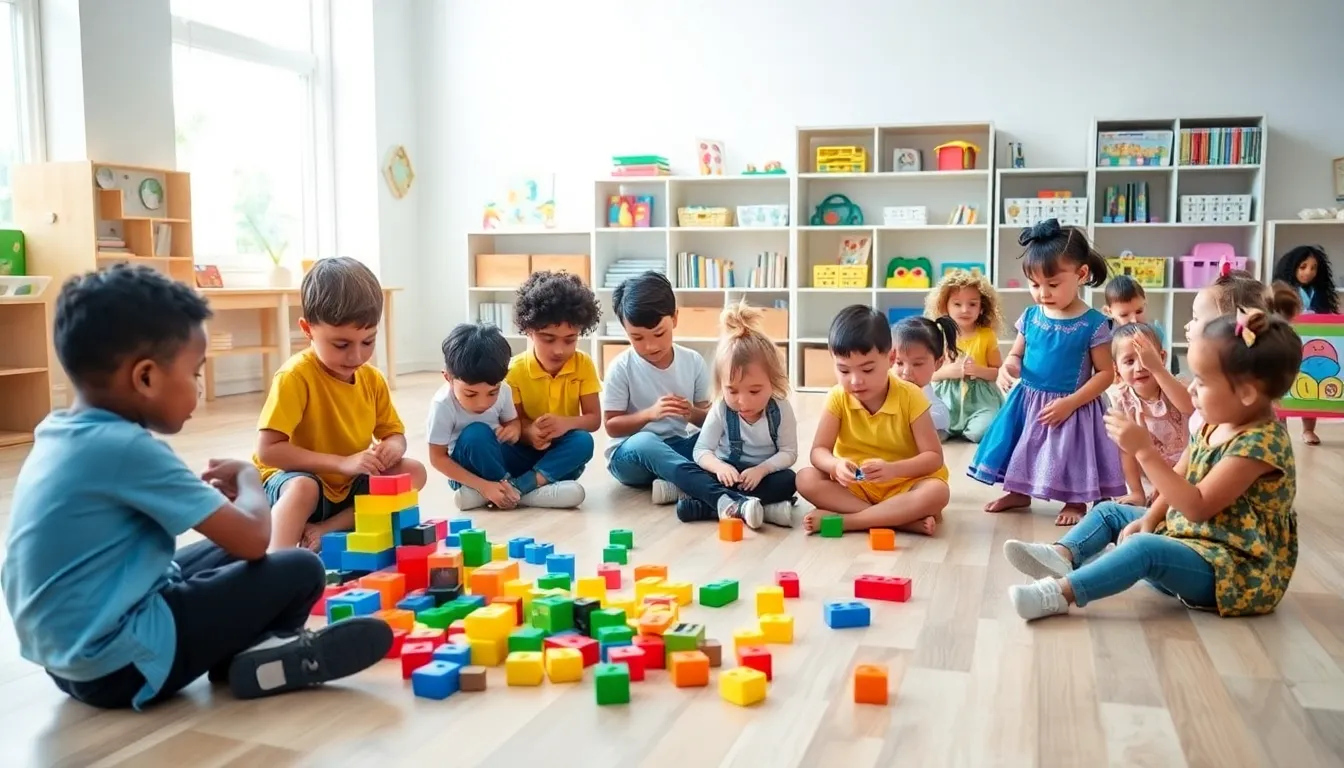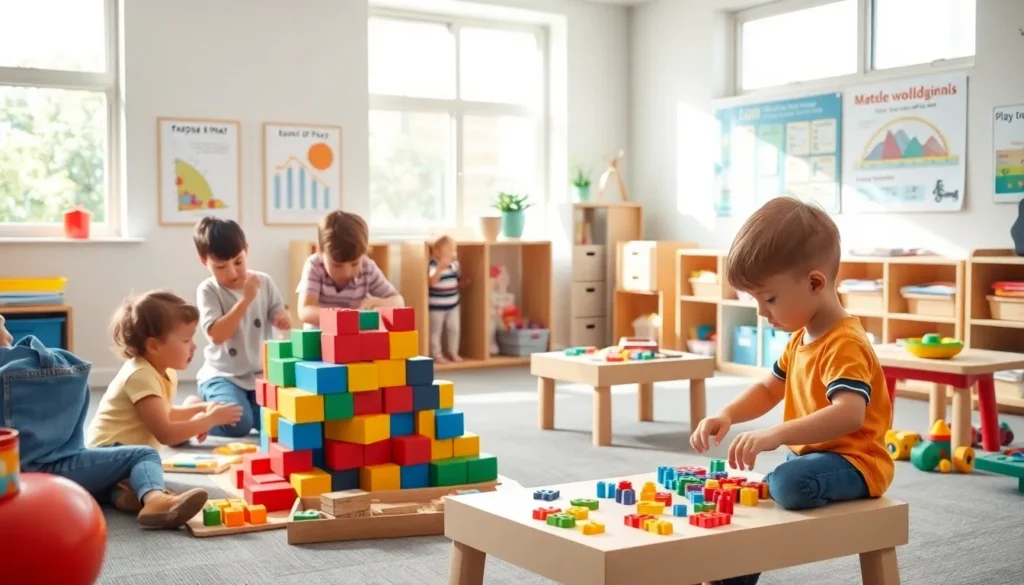When it comes to early childhood, play isn’t just a fun way for kids to pass the time: it’s a vital building block for their development. Think of play as the secret ingredient in a recipe, without it, everything falls flat. Just like adults need to unwind after a long day, children use play to explore the world around them, express emotions, and learn how to interact with others. In this text, we will jump into the intriguing realm of the stages of play in early childhood, illuminating why this playful dance is key to shaping well-rounded individuals. So, grab your metaphorical magnifying glass and let’s investigate.
Table of Contents
ToggleUnderstanding Play In Early Childhood Development

Play is more than just an enjoyable activity: it’s essential for early childhood development. During play, children experiment, learn, and grow in ways that go beyond traditional learning methods. Through various kinds of play, children find their identities, learn about social roles, and enhance their creativity. From building blocks to imaginary games, the diverse nature of play allows children to explore wholesomely.
Research shows that brain development occurs at an astonishing rate in these early years. For instance, by the time a child reaches age three, they have made 1,000 trillion neural connections. Engaging in play helps to solidify these connections, pushing their cognitive, emotional, and social skills into overdrive.
In essence, play in early childhood serves as an insightful lens through which adults can observe a child’s thought processes, interests, and emotional reactions. It’s an exciting journey of discovering how kids think and learn.
The Importance Of Play For Children
Play is crucial for children for several reasons. It enhances cognitive skills by allowing them to solve problems and make decisions. When kids build forts or engage in pretend play, they are trying out scenarios that may develop their analytical abilities later in life.
Also, through play, children learn essential social skills. Interacting with peers fosters cooperation, negotiation, and conflict resolution. This is especially true during group play when they learn to share, take turns, and empathize with others.
Emotionally, play acts as an outlet for stress and anxiety. In times of emotional upheaval, children use it as a safe space to express complex feelings. This gives them crucial coping mechanisms.
Summarizing, play ignites a sense of freedom and imagination that supports a child’s holistic development, making it invaluable in the growing years.
The Six Stages Of Play
Understanding that play evolves is crucial for supporting a child’s development. Here’s a breakdown of the six vital stages of play, showcasing how children progress in their playtime adventures.
1. Unoccupied Play
During this initial stage, infants engage in idiosyncratic actions. They may wiggle their fingers, wave their hands, or explore their surroundings. This isn’t just random movement: it lays the groundwork for sensory exploration and motor skills.
2. Solitary Play
As they grow older, children enter solitary play. This stage, often occurring between 2 to 3 years of age, involves playing alone. Even if a child seems engrossed in a single activity, they are starting to explore fun concepts and developing focus.
3. Onlooker Play
Here, children watch others play but don’t actively participate in the activity. This observational phase is critical for their social development. They learn how to become participants and form ideas about their interaction strategies.
4. Parallel Play
Around age two, children often begin parallel play, wherein they play alongside each other yet remain independent. They might engage in similar activities and mimic each other but don’t necessarily interact. This form of play prepares them for socialization alongside peer engagement.
5. Associative Play
As children get a bit older, associative play engages them in real social interactions. In this phase, they begin to share toys and ideas, developing more profound respect and understanding for cooperation. They’re not just side by side anymore: they are communicating and collaborating.
6. Cooperative Play
Finally, we reach the cooperative stage, typically emerging in preschool years. Kids actively participate in organized group play, often creating roles within games and interacting more collaboratively. In this stage, negotiation and teamwork come to the forefront as they work toward a shared goal.
Factors Influencing Stages Of Play
Several factors can impact the stages of play, shaping how and when a child engages in different types. Socioeconomic status, for instance, plays a role in the availability of play materials and resources. Children in resource-rich environments tend to have greater opportunities for varied play experiences, affecting their development stages.
Cultural influences are equally significant. Different cultures might promote specific types of play, so influencing development variations. A child raised in a culture that values communal activities may progress through the play stages distinctly compared to one from a culture that emphasizes solitary achievements.
Also, parental involvement in play is crucial as well. Active participation can encourage children’s engagement and help them explore through guided experiences. When caregivers foster an environment that encourages creativity and exploration, they directly influence healthy development.
Supporting Healthy Play Development
To encourage healthy play development, caregivers and educators can take several proactive steps. First and foremost, creating a safe and stimulating environment is essential. This can include a variety of toys, art supplies, and open spaces where free play can flourish.
Encouraging interactions with peers is also significant. Organized playdates or community activities provide valuable opportunities for kids to navigate social dynamics and apply their skills in real-life contexts.
But, striking a balance is just as important. Children need time for both structured activities and unstructured free play. Both elements help ensure they develop well-rounded skills.
Finally, observing children during their play can provide insights into their developmental stages and emotional states. This observation allows caregivers to respond appropriately, supporting their unique growth journey.








